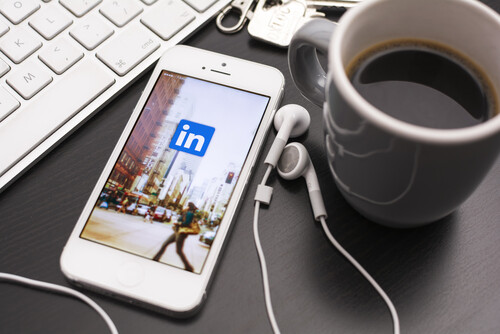The team at Smart Data Collective has spoken to numerous marketing experts about the role of big data in their profession. It is one of the fields that depends on data more than any other. However, many experts focus so heavily on the big picture that other specific elements don’t get as much discussion. We wanted to change that and focus on the role of big data in LinkedIn sponsored content marketing.
How LinkedIn Sponsored Content Depends On Big Data
LinkedIn is probably one of the most valuable marketing channels that is neglected by marketing professionals all the time. It’s either seen as a less social media network or seen as not really a place for content. The audience is also smaller than Facebook or Twitter, and ads are more expensive.
However, the kicker is that ads can be more accurately targeted and can have a higher ROI than other CPC campaigns. There are a couple of LinkedIn Ad Campaign options, text ads and sponsored content. This article will focus on sponsored content, and how to use this method effectively, but many of the same principles apply to text ads as well.
This would not be possible without big data. LinkedIn may not keep as detailed records on its users’ personal lives as Facebook, but it has a very deep knowledge of their professional lives. This makes it easier for brands to make sure their ads are carefully targeted.
Rob Livingston of the Fellow of the Faculty of Engineering and Information Technology for University of Technology Sydney states that this is not just a trend with LinkedIn, but with all marketing platforms:
“The challenge facing advertisers and advertising professionals is remaining relevant in the face of a fundamental technological change. Namely, algorithms and big data. A number of interconnected trends are coming together to make this world of data. Over 40% of the world’s population now has access to the internet. This is both a large market for advertisers to go after and a huge source of data. But the explosive uptake of smartphones has also brought on a large number of first-time internet users – fresh eyes for advertisers – and there are many more to come.”
Why Big Data Marketers Are Turning to LinkedIn
LinkedIn is not just for B2B marketing, although many might think so. Instead, it often works as a great B2C tool as well. The reasons are twofold. The first is that people are usually more business oriented when they are on LinkedIn, so more likely to respond to your sponsored content, especially if it is informative and well written.
While in some cases, CTR is lower than Facebook or Twitter, the conversion percentage is better. Of course, if you are offering the information a person is looking for, and your targeting is solid, you may see both better CTR and better conversion percentages.
The simple fact is that targeting is the primary reason for choosing LinkedIn Sponsored Content. You can target users by everything from profession to position in a company to interests and skills. The ability to be so precise means if you know your audience, you will succeed. Sponsored content lets you do just that.
Set Up A Company Page
The first step is to set up a company page. This page is similar to your career or personal page, but instead it has a company name. You set up a profile, select interests, list products and services, and get recommendations from clients and customers.
As a bonus, your company page can often be a great recruiting tool to bring others to your team, those who can help you grow your business. This company page allows you to create posts and content that are relevant to your potential customers.
Create A Funded Business Account
Obviously, for your page to be effective, it needs to be a business account. That business account also needs to be funded. Be sure you set up a billing source like your business PayPal or a credit card. (Always use a credit card rather than a debit card. That way if it is compromised, the thief does not have access to your bill-paying money).
Once your business account is ready and funded, you are ready to set up your first campaign. There are a few things you will need to do at this stage.
Choose Your Targets
As stated above, one of the big advantages of LinkedIn sponsored content is targeting. There are a few simple questions you should ask yourself.
- Do you know the profession of your targets?
- Do you know what company or companies they work for?
- Do you know what rank they might hold in their company?
- What else do you know about your potential customers that you can use to target them?
To determine this, look through the targeting parameters of LinkedIn, and see which of them applies to you and your campaign. If you don’t know any of these things, go back and create a marketing persona, and look at who your customers are, who you want them to be, and which of them are your competition’s customers as well.
In other words, go back to some marketing basics and see if you can’t make some better targeting decisions with your ad spend on LinkedIn. Writing and sponsoring several pieces of content directed to different targets will increase both your CTR and your conversion rates.
Set Your Budget
The cost per click (CPC) will be lower or higher depending on what you are targeting. Usually minimums are around $2 per click. There are also CPM (Cost per 1,000 impressions) options as well, but they are seldom as cost effective as CPC ads, at least on LinkedIn.
Be careful though. If you are in some competitive fields, your CPC rates could be as high as $5, so be sure to check the cost. The minimum spend with LinkedIn is $10 per day, so be aware of that also. Of course, the more you can budget per day, the more likely you will see a better return. A budget of up to $100 a day will give you the most flexibility.
Write A Compelling Headline
Even with the most ideal targeting and the biggest budget, you can’t reach your customers without a compelling headline. No one will click on another bland post in your niche no matter what bright colors you insert into your ad, or how great the design is.
Sponsored content needs to sell itself right from the start, and that means a strong headline that entices a reader to click. Be unusual, use humor, add strong action words, or ask open ended questions. Just like email subject lines and ad taglines, you need to get the reader excited enough about what they are about to read that they can’t help but want to read more.
Create Great Content
It doesn’t do any good to have the greatest headlines in the world, fantastic targeting and a realistic budget if readers leave as soon as they start reading your content. Your content should tell a story, and a compelling one that keeps the reader engaged all the way to your Call to Action (CTA).
This means the story needs a beginning, middle, and end, and then a takeaway message. If you have trouble with this, either hire a professional to write content for you or learn to write better. The content of your sponsored posts is worth more than all the rest of your metrics combined. If a reader does not keep on reading, there is no way they will become your customer.
There are many ways to measure the success of an advertising campaign, and they go beyond simple click through rates and conversions. What value did your content add to your profile? Are people talking about it, and sharing it with their friends and coworkers, your potential clients? If the answer is yes, you are using LinkedIn sponsored content properly.
Big Data Is Key To Success With LinkedIn Sponsored Content
Marketing with LinkedIn requires a detailed knowledge of big data. Fortunately, there are a number of big data tools that can help you optimize your ads to their full effectiveness. Make sure you collect detailed data from your campaigns and optimize them accordingly.
Was this article helpful and informative? Leave us a comment with your thoughts in the section below.









